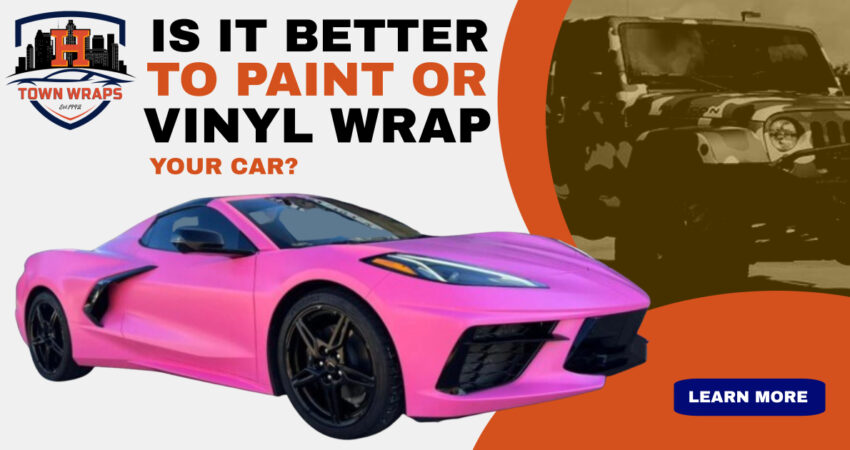When it comes to changing the appearance of a car, two popular options are painting and vinyl wrapping. Both methods have their advantages and disadvantages, and the choice between the two ultimately depends on your preferences, budget, and specific needs. In this discussion, we will delve into the pros and cons of each method to help you make an informed decision.
Painting a car has long been the traditional method of altering its color and overall look. Here are some of the advantages of painting:
- Customization and Quality: Painting allows for complete customization. You can choose any color and finish, from matte to metallic, and even create unique designs or patterns. Additionally, professional paint jobs can provide a high-quality, glossy finish that enhances the overall appearance of the vehicle.
- Durability: A well-done paint job, especially when using high-quality paint and clear coat, can offer excellent durability. Properly maintained, a painted car can withstand various weather conditions, UV exposure, and minor scratches. However, it’s worth noting that the longevity of the paint largely depends on factors such as paint quality, application technique, and maintenance.


On the other hand, vinyl wrapping has gained popularity in recent years as a versatile alternative to paint. Here are some advantages of vinyl wrapping:
- Cost-Effective: Vinyl wrapping is generally more cost-effective than a full paint job, especially for complex designs or color changes. The materials used in vinyl wrapping are typically cheaper than high-quality automotive paint, making it a more budget-friendly option.
- Temporary and Reversible: Vinyl wraps are not permanent alterations to the car’s exterior. They can be easily removed without leaving residue or damaging the original paint underneath. This feature is particularly attractive for those who want to change their vehicle’s appearance temporarily or revert to the original paint for resale purposes.
- Protection and Maintenance: Vinyl wraps provide an extra layer of protection against small dings, scratches, and UV rays. They can act as a shield for the underlying paint, helping to preserve its condition and resale value. Additionally, vinyl wraps are relatively easy to clean and maintain compared to paint, requiring only regular washing with mild soap and water.
In conclusion, choosing between painting and vinyl wrapping a car depends on several factors, including your budget, desired level of customization, durability expectations, and whether you prefer a temporary or permanent modification.
If you’re looking for a more cost-effective, temporary option with some protection benefits and easier maintenance, vinyl wrapping is your best bet.
